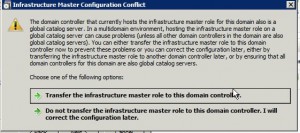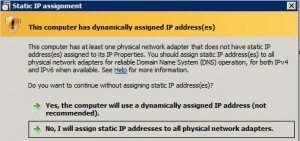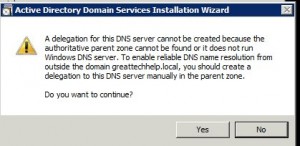This is the procedure I used to root my T-Mobile Samsung Galaxy Tab 7 (with no SD card installed and USB debugging enabled) and install the Overcome Gingerbread ROM. The computer I used is a Macbook Pro running Windows 7 64bit in VMware Fusion 3.1.3.
First, a little background. Why did I wait so long and what finally brought me to do this? I waited so long, because I am under a two year contract, and I wanted to give Samsung and T-Mobile the opportunity to do good by use early adopters of the Android tablet ecosystem. I was encouraged when I heard that the other carriers were getting the Gingerbread update. I really wanted to run Gingerbread on the device, because it was clear pretty early on that some fixes were needed. Several months later and basically a no response kind of response from Samsung on several occasions did not give me much hope. I decided I would give it a year which would have been in January. Well, Google Music release came along and pushed toward updating sooner. I had used the beta on my Froyo Galaxy Tab for a while. While not impressed, it did work. I uploaded music and could stream on multiple devices. However, when Google released Google Muisc and introduced the music store, I found it completely unusable. Everything, I looked at seemed to indicate that is should work in Froyo, but did not work much more often than it did. What led me to Gingerbread, was when I tried to access Google Music via my Dolphin web browser. I got a message stating that the version of my device was not supported. I thought this was pretty funny, because the web site works surprisingly well on IOS. I checked out Google Music on a Samsung Vibrant running Gingerbread and it seemed to work ok (a little slow, but I could see everything I bought and uploaded). So, I decided to jump in and give a go. So far, I am pleased with the smoothness and what seems to be a little speed boost (especially in K9-Mail and browsing the web using the Dolphin HD browser). Also, I am pleased with the performance of Google Music on Gingerbread. It works much better than on the Vibrant. So far, I have had only on “Force quit” come up (K9-Mail). We will see how it goes, but so far it looks like an improvement.
Computer OS: Windows 7 64bit
Android Device: Samsung Galaxy Tab 7 T-Mobile version running Froyo (Android 2.2)
Gingerbread ROM: Overcome Series 7 Version 4.0.0
From Windows 7:
Ensure the you have at least Framework 2.0 installed. I had Microsoft .Net Framework 4.0 installed.
From Windows 7:
Make sure you have the drivers for your Galaxy Tab installed and working properly. I have my Windows installation configured to use Windows Update to locate and install the correct drivers, if they cannot be found on the system already. This worked well for me.
From Windows 7:
Root using SuperOneClick:
Download the zip file from http://shortfuse.org.
Unzip the file on your computer.
From Windows 7:
Execute the SuperOneClick.exe as administrator ( right mouse click and Run as administrator).
If successful, you should end up with SuperUser icon in your Applications.
From Galaxy Tab:
Download and install “Titanium Backup root” from the Market.
From Galaxy Tab:
Once rooted, patch the boot loader by downloading and running the app file on your Froyo based Tab only. I downloaded it from here: http://forum.xda-developers.com/showthread.php?t=888071
Connect your Galaxy Tab to your computer (make sure the drivers are installed and loading successfully) and turn on mass storage (I did this by pulling down the notification on the Galaxy Tab, and clicking on the USB notification and turning on USB Storage.). Navigate to your device drive via Computer in Windows, and create a TitaniumBackup directory on the root of the drive.
From Galaxy Tab:
Launch Titanium Backup and backup up all you data and applications by choosing user data and apps from the the batch option. Backup to the TitaniumBackup directory on your device.
Connect your device to your device to your computer and turn on mass storage.
From Windows 7:
Copy the TitaniumBackup directory on your Galaxy Tab to your computer.
From Windows 7:
Download the following three files from the TeamOvercome website:
001001-GB-stock-safe_v5.zip
002001-Overcome_Kernel_v4.0.0.tar
001002-Overcome_7_Series_v4.0.0_Wipe.zip
From Windows 7:
Unzip 001001-GB-stock-safe_v5.zip on your computer.
From Galaxy Tab:
Put your tab in download mode.
Turn it off.
Press the Volume Down button and the Power button at the same time.
Hold them until you see the “Downloading… Do not turn off Target!!!” message displayed on the Tab.
From Windows 7:
Go to the folder where you unzipped the 001001-GB-stock-safe_v5.zip file.
Navigate to the Odin3_v1.7 directory and launch the ODIN executable by right mouse clicking on it and selecting Run as administrator.
From Windows 7:
At this point, you can tell that everything is fine, if you have a yellow shaded box under ID:COM with something like 0:[COM4] in it. If not, it is either an issue with the drivers or you did not execute ODIN as administrator (The mistake I made the first time, I tried this.).
From Windows 7:
Click PIT button and choose gt-p1000_mr.pit from the files you extracted earlier.
From Windows 7:
Click the PDA button and choose the GB_Stock_Safe_v5.tar file.
From Windows 7:
Click the Phone button, and navigate to the T-Mobile Modem directory and choose the modem.bin file (note; this is only for T-Mobile tabs. Other tabs will use different modem files. See the TeamOvercome site for those.).
From Windows 7:
Click Start. This will go through the process of installing the Samsung JQ1 ROM. Let it go without interrupting.
From Galaxy Tab:
In my case, the ROM installed but then just sat in the Reboot menu. I had to hit the power button to have the device reboot.
From Galaxy Tab:
Once the device is back up, you are presented with a setup wizard. I selected English (it came up in Italian), and just clicked next or cancel through the wizard.
From Galaxy Tab:
Next you need to turn on mass storage and connect your tab to your computer so that you can copy the following file to your Galaxy Tab to the root of your device:
001002-Overcome_7_Series_v4.0.0_Wipe.zip
From Galaxy Tab:
Once the file is copied to the root of your mounted device drive , power down your device and put it in download mode again.
Turn it off.
Press the Volume Down button and the Power button at the same time.
Hold them until you see the “Downloading… Do not turn off Target!!!” message displayed on the Tab.
From Windows 7:
Fire up the ODIN utility again, and click the PDA button.
Select the Overcome_Kernel_v4.0.0.tar file you downloaded earlier.
Click Start. Your Galaxy Tab should reboot automatically. Mine rebooted fine (no reboot menu like previously).
From Galaxy Tab:
Once up, we need to go into Recovery mode.
Power down the tab.
Hold the Volume Up bottom and the Power until you see the Galaxy Tab on the screen.
You will know you are in recovery mode, when a menu display comes up in the upper left corner of display.
From Galaxy Tab:
Once in the recovery mode, navigate to the “install menu” using the volume rocker and hit the Power to enter the install menu.
From Galaxy Tab:
Navigate to “choose zip from internal sdcard” and hit the power button to select the zip file you copied to your device earlier.
From Galaxy Tab:
If you copied the 001002-Overcome_7_Series_v4.0.0_Wipe.zip to the root of your internal storage as outlined earlier, you will see the file listed.
Navigate to it and select it by hitting the power button.
To confirm you need to hit the power button again. This will install the Overcome ROM. You will get a message welcoming you to the Overcome Experience.
From Galaxy Tab:
Once done navigate to Go Back option and hit the power button.
From Galaxy Tab:
Then select the reboot menu and hit the power button.
From Galaxy Tab:
Then select reboot the system and hit the power button. This will reboot the Galaxy Tab with the Overcome ROM.
From Galaxy Tab:
Once the Galaxy Tab is up, you need to run through the setup wizard again (I think this was initially in German this time.).
From Galaxy Tab:
Once through the wizard, turn on mass storage, and copy your TitaniumBackup directory to your Galaxy Tab.
From Galaxy Tab:
Go to the Android market and install “Titanium Backup root”.
From Galaxy Tab:
Launch Titanium Backup, and restore your applications and data. This worked great for all my applications, except voice application (Voice Synthesis?) that was recently added to Google Maps.


